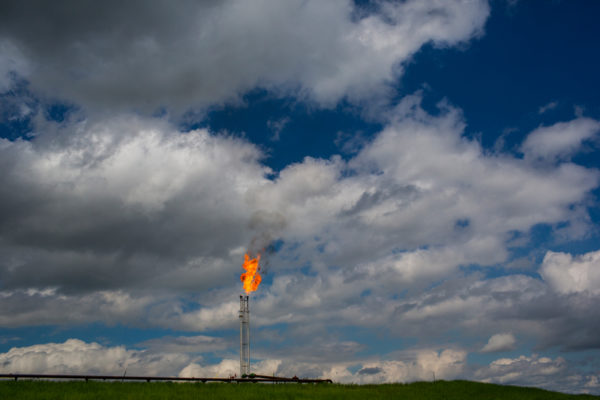Unearthed today: The debate is shifting
Welcome to Unearthed today the daily climate and environment news wrap. Sign up below

Welcome to Unearthed today, the climate and environment news daily from Greenpeace’s investigative journalism unit, Unearthed. Today the signs are the way we think about climate change could be shifting, though the reality of corporate and political action isn’t – yet.
What’s going on with climate
Two studies out today add to the mounting evidence that formulas for reducing emissions that rely on polluting now and sucking carbon out of the air later may run into some big problems.
Study finds arctic fires, thawing permafrost pose growing threat to climate: The warming Arctic tundra will make it harder for the world to curb climate change, as thawing permafrost and wildfires release greenhouse gases that are not fully accounted for in global emissions agreements, a study has found. The researchers estimate that fires along with abrupt thawing events could increase carbon emissions up to 40% by the end of the century unless fossil fuel emission are drastically reduced.
Antarctica is headed for a climate tipping point by 2060: The new study, published in the journal Nature shows that if emissions continue at their current pace, by about 2060 the Antarctic ice sheet will have crossed a critical threshold and committed the world to sea level rise that is not reversible on human timescales.Pulling carbon dioxide out of the air at that point won’t stop the ice loss, it shows, and by 2100, sea level could be rising more than 10 times faster than today.
Calls for radical shifts in policy
At the same time two stories today also show a shift in the policy landscape, away from future facing targets and towards more immediate and radical measures to curb emissions.
Energy groups must stop new oil and gas projects to reach net zero by 2050, IEA says: The radical proposal could call into question major investments by firms such as Bp which are theoretically aligned to net-zero but now find themselves at odds both with the IEA and the Science Based Targets initiative.
The share of fossil fuels in the global energy supply would need to fall from around four-fifths currently to one-fifth by 2050. Solar would become the single biggest energy source — or 20 per cent of global energy demand.
The Paris-based think-tank also called for a ban on all new gas boilers (including in existing homes) in 4 years time, way ahead of the UK government’s own targets though they did include a tedious and economically non-sensical loophole for “hydrogen ready” equipment.
I’d love to bring you more, but the site has crashed but here’s a great take – as ever – from Carbon Brief.
Finally, less a headline and more a think-piece Foreign Policy magazine delves into the problem with Big Agriculture.
“As of this writing, animal agriculture accounts for 14.5 percent of total anthropogenic greenhouse gas emissions annually. It is also the source of 60 percent of all nitrous oxide and 50 percent of all methane emissions, which have 36 times and 298 times, respectively, the warming potential of carbon dioxide. As industrial animal agriculture has scaled up, agricultural emissions of methane and nitrous oxide have been going in one direction only: up.” It goes on to mention air pollution, epic deforestation and the total destruction of ecosystems.
But we’re focused on what should happen here, so here’s what it says on that:
“As a start, the United States could set an example for the Global North with a 50-year farm bill. The bill would promote ecosystem diversification and increased resilience by reducing acreage of annual grain crops from 70 percent to 10 percent or less of all cropland while scaling up perennial crops to 80 percent of farmland. The remaining 10 percent would be allocated to other crops, including a diverse array of locally produced vegetables and fruits. Soil and water-conserving perennial varieties of rice, wheat, legumes, and other food-grain crops—which are now being developed—could serve as components of diverse, perennial, multispecies communities of food crops that replicate how nature functions. The bill would promote a transition to smaller, more diverse farm operations as agricultural diversification will work most effectively not on vast, uniform acreages but as mosaics made up of many modest-sized farms.”
What is happening
It’s not… exactly on point.
Biden administration announces new Energy Star standards: The plans include the first-ever sustainability benchmarks for federal buildings and programs promoting electric heat pumps.
Merkel rejects bringing forward Germany’s exit from coal: German Chancellor Angela Merkel on Saturday (15 May) rejected calls to bring forward the country’s exit date for coal in power generation, currently set at 2038.
Supreme Court sides with oil companies in Baltimore climate liability case: Ruling could make it easier for oil companies to take the case to a federal court, where they think they are more likely to win.
Green light for ‘net zero’ equivalent for nature: The UK government is expected to announce a legally-binding target for 2030 to drive action to halt the decline of nature and wildlife.
And finally.. Pilita Clark reports on the “looming net-zero car crash”.
“These groups face rising pressure to be both environmentally and financially sustainable at a time when the green technologies they need are still on the drawing board; government policy support is paltry and a small group of influential but poorly understood umpires are judging their progress.”
Regrettably, interest in offsets is rising in tandem with net zero targets. “There’s going to be a green rush to find the most credible certificates out there,” one food company executive predicts. That rush is on course to collide with investor demands for scientifically credible climate targets rather than vague pledges to do something in the future.

